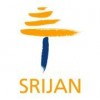Filter interviews by
Litmus7 Systems Consulting Java Developer Interview Questions and Answers
21 Interview questions
Find consecutive subarrays in two integer arrays with sum > 6.
Iterate through both arrays to find consecutive subarrays.
Calculate the sum of each subarray and check if it is greater than 6.
Return the subarray with sum > 6.
Filter a specific name from a string array
Iterate through the array and check each element for the desired name
Use a conditional statement to filter out the name from the array
Consider using Java 8 streams and lambda expressions for a more concise solution
The synchronized keyword in Java ensures that a method or block is accessed by only one thread at a time, preventing thread interference.
Used to control access to a method or block by multiple threads.
Can be applied to methods (synchronized method) or blocks (synchronized block).
Example of synchronized method: 'public synchronized void methodName() { ... }'
Example of synchronized block: 'synchronized(this) { ... }...
Interfaces define contracts for classes, while abstract classes provide a base with shared code and can have state.
An interface can only declare methods (no implementation), while an abstract class can have both abstract and concrete methods.
A class can implement multiple interfaces but can inherit from only one abstract class.
Interfaces are used for defining capabilities (e.g., Comparable), while abstract classes...
JWT Tokens are a type of token used for authentication and authorization in web applications.
JWT stands for JSON Web Token
JWT tokens are compact, URL-safe tokens that can be easily transmitted between parties
JWT tokens consist of three parts: header, payload, and signature
JWT tokens are often used in stateless authentication systems
Example: eyJhbGciOiJIUzI1NiIsInR5cCI6IkpXVCJ9.eyJzdWIiOiIxMjM0NTY3ODkwIiwibmFtZSI6I...
The == operator compares memory addresses, while the equals method compares the actual content of objects.
The == operator checks if two object references point to the same memory address.
The equals method checks if two objects have the same content.
Example: String str1 = new String("hello"); String str2 = new String("hello"); str1 == str2 will return false, but str1.equals(str2) will return true.
Spring Boot applications can be deployed using various methods such as embedded servers, Docker containers, and cloud platforms.
Deploying as a standalone JAR file using embedded servers like Tomcat or Jetty
Building a Docker image and running the application in a container
Deploying to cloud platforms like AWS, Azure, or Google Cloud Platform
Using CI/CD pipelines for automated deployment
Dependency Injection is a design pattern in Spring Boot where the dependencies of a class are injected from the outside.
In Spring Boot, Dependency Injection is achieved through inversion of control, where the control of creating and managing objects is given to the Spring framework.
Dependencies can be injected into a class using constructor injection, setter injection, or field injection.
By using Dependency Inject...
Stages in Jenkins are the different steps in a Jenkins pipeline that define the actions to be executed.
Stages help break down the pipeline into smaller, manageable sections
Each stage can have multiple steps to be executed
Stages can be sequential or parallel
Common stages include build, test, deploy, and notify
Checked exceptions are checked at compile time, while unchecked exceptions are not.
Checked exceptions must be either caught or declared in the method signature using 'throws' keyword
Unchecked exceptions do not need to be caught or declared
Examples of checked exceptions: IOException, SQLException
Examples of unchecked exceptions: NullPointerException, ArrayIndexOutOfBoundsException
Litmus7 Systems Consulting Java Developer Interview Experiences
4 interviews found
I applied via Naukri.com and was interviewed in Jun 2024. There was 1 interview round.
(28 Questions)
- Q1. Explain Abstraction and Encapsulation
- Ans.
Abstraction focuses on hiding implementation details, while encapsulation bundles data and methods into a single unit.
Abstraction allows us to focus on the essential features of an object while hiding unnecessary details.
Encapsulation helps in data hiding by restricting access to certain components of an object.
Abstraction is achieved through abstract classes and interfaces in Java.
Encapsulation is implemented using ac...
- Q2. Explain the use of Final keyword
- Q3. Difference between == operator and equals method
- Q4. Explain about Hash Table
- Ans.
Hash table is a data structure that stores key-value pairs and allows for fast retrieval of values based on keys.
Hash table uses a hash function to map keys to indexes in an array.
It provides constant time complexity O(1) for insertion, deletion, and retrieval operations.
Collisions can occur when two keys hash to the same index, which can be resolved using techniques like chaining or open addressing.
- Q5. What is Synchronized keyword
- Q6. What is the use of volatile keyword
- Q7. What are checked and unchecked exceptions
- Q8. Difference between Interface and Abstract class
- Q9. Explain Dead lock in multi threading
- Q10. How to achieve thread safety in java
- Q11. Difference between PUT and POST method
- Ans.
PUT is used to update or replace an existing resource, while POST is used to create a new resource.
PUT is idempotent, meaning multiple identical requests will have the same effect as a single request.
POST is not idempotent, meaning multiple identical requests may have different effects.
PUT is used to update an existing resource at a specific URI.
POST is used to create a new resource under a specific URI.
PUT requests ar...
- Q12. What are Spring Actuator
- Q13. How to deploy a spring boot application
- Ans.
Spring Boot applications can be deployed using various methods such as embedded servers, Docker containers, and cloud platforms.
Deploying as a standalone JAR file using embedded servers like Tomcat or Jetty
Building a Docker image and running the application in a container
Deploying to cloud platforms like AWS, Azure, or Google Cloud Platform
Using CI/CD pipelines for automated deployment
- Q14. Write a program with Java 8 to filter the employees based on salary greater than 10,000 from a list of Employee objects.
- Q15. How to rollback a transaction in spring boot
- Q16. Explain Dependency Injection in spring boot
- Q17. Different ways of Dependency Injection
- Q18. Explain Security management, how to enable security for APIs.
- Q19. Explain JWT Tokens
- Q20. How to write a test case for a private method
- Q21. Stages in Jenkins
- Q22. Write the singleton design pattern
- Q23. What is memory leaks in java
- Q24. Difference between String and String builder
- Q25. Explain Garbage Collection in java
- Ans.
Garbage collection in Java is the process of automatically reclaiming memory that is no longer in use by the program.
Garbage collection is performed by the JVM to free up memory occupied by objects that are no longer referenced by the program.
It helps in preventing memory leaks and ensures efficient memory management.
Java provides automatic garbage collection, so developers do not have to manually free up memory.
Exampl...
- Q26. Difference between Array and ArrayList.
- Q27. Design patterns used
- Ans.
Various design patterns like Singleton, Factory, Observer, etc. are used to solve common problems in software development.
Singleton pattern ensures a class has only one instance and provides a global point of access to it.
Factory pattern creates objects without specifying the exact class of object that will be created.
Observer pattern defines a one-to-many dependency between objects so that when one object changes stat...
- Q28. What is Rest Services
Skills evaluated in this interview
I applied via Approached by Company and was interviewed in Jun 2024. There were 3 interview rounds.
(3 Questions)
- Q1. Functional interfaces
- Q2. Multithreading in spring boot
- Ans.
Multithreading in Spring Boot allows for concurrent execution of tasks, improving performance and responsiveness.
Spring Boot provides support for multithreading through the use of @Async annotation.
By annotating a method with @Async, it will be executed in a separate thread.
ThreadPoolTaskExecutor can be configured to control the number of threads used for executing async methods.
Example: @Async public void asyncMethod(...
- Q3. Stream api, microservice
(3 Questions)
- Q1. Given two integer array. find consecutive sub arrays and return sub array which has sum >6
- Q2. Find max element from integer array
- Q3. Filter a name from string array
(1 Question)
- Q1. Salary package discussion
Interview Preparation Tips
Skills evaluated in this interview
I applied via Naukri.com and was interviewed in Jun 2024. There was 1 interview round.
(2 Questions)
- Q1. Comparable vs Comparator
- Q2. WHat is Executor Service
- Ans.
Executor Service is a framework provided by Java to manage and control the execution of tasks in a multithreaded environment.
It provides a way to manage threads and execute tasks asynchronously.
It allows for the reuse of threads instead of creating new ones for each task.
It can handle task scheduling, thread pooling, and thread lifecycle management.
Example: Executors.newFixedThreadPool(5) creates a thread pool with 5 t...
Interview Preparation Tips
Skills evaluated in this interview
I applied via Company Website and was interviewed in May 2024. There was 1 interview round.
(1 Question)
- Q1. Java program to find couple sum of two integers in ArrayList will be equal to a integer value .
Interview Preparation Tips
Stored procedure
Spring security
Deadlock
Skills evaluated in this interview
Top trending discussions






Interview questions from similar companies

Java Developer Interview Questions & Answers
Ksolves India Limitedposted on 7 Jul 2024
(3 Questions)
- Q1. What is OOPS concept
- Q2. What is Encapsulation
- Q3. Define Four pillars
Skills evaluated in this interview

I applied via Approached by Company and was interviewed in Mar 2024. There were 2 interview rounds.
Code review to find bugs
(1 Question)
- Q1. State the features of interface Spring boot annotations Microservice communication table index
- Ans.
Interface features include abstraction, multiple inheritance, and contract enforcement.
Abstraction: Interfaces allow for the definition of methods without implementation, providing a blueprint for classes to follow.
Multiple Inheritance: Java interfaces support multiple inheritance, allowing a class to implement multiple interfaces.
Contract Enforcement: Interfaces define a contract that implementing classes must adhere ...
Skills evaluated in this interview

I applied via Naukri.com
(1 Question)
- Q1. Data structures Core java Spring boot Hibernate
Interview Preparation Tips

I applied via Walk-in and was interviewed before Mar 2021. There were 3 interview rounds.
Aptitude test
Current affairs
(1 Question)
- Q1. Puzzle , sql related questions
Interview Preparation Tips

Software Developer Interview Questions & Answers
Ksolves India Limitedposted on 20 May 2021
I applied via Referral and was interviewed in Nov 2020. There were 4 interview rounds.
Interview Questionnaire
2 Questions
- Q1. Basic programming concepts, OOPs & logical questions
- Q2. Particular technology related and basic array programming
Interview Preparation Tips

I applied via Recruitment Consulltant and was interviewed before Oct 2021. There were 4 interview rounds.

Reasoning and aptitude questions are given
(2 Questions)
- Q1. Tell all concepts of Overloading
- Ans.
Overloading is a concept in programming where multiple functions can have the same name but different parameters.
Functions with the same name but different parameters can be defined in a class
Overloading allows for flexibility in function usage
Example: void print(int num) and void print(string text) are overloaded functions
- Q2. Tell me about a live example of inheritance
- Ans.
Inheritance in software development allows a class to inherit properties and behaviors from another class.
Inheritance allows a subclass to reuse code from a superclass
Subclass can also add new functionalities or override existing ones
Example: Animal class can be a superclass with properties like name and age, while Dog class can inherit from Animal and add a method bark()
(1 Question)
- Q1. Tell about the your self
Interview Preparation Tips
Litmus7 Systems Consulting Interview FAQs
Some of the top questions asked at the Litmus7 Systems Consulting Java Developer interview -
Tell us how to improve this page.
Litmus7 Systems Consulting Interviews By Designations
- Litmus7 Systems Consulting Java Developer Interview Questions
- Litmus7 Systems Consulting Associate Engineer Interview Questions
- Litmus7 Systems Consulting Technical Support Engineer Interview Questions
- Litmus7 Systems Consulting Devops Engineer Interview Questions
- Litmus7 Systems Consulting Senior Engineer Interview Questions
- Litmus7 Systems Consulting Software Developer Interview Questions
- Litmus7 Systems Consulting Consultant Interview Questions
- Litmus7 Systems Consulting Senior Android Developer Interview Questions
- Show more
Interview Questions for Popular Designations
Overall Interview Experience Rating
based on 4 interview experiences
Difficulty level
Duration
Java Developer Interview Questions from Similar Companies
|
Technology Specialist
130
salaries
| ₹9 L/yr - ₹28 L/yr |
|
Senior Engineer
125
salaries
| ₹8.5 L/yr - ₹15 L/yr |
|
Senior Software Engineer
55
salaries
| ₹11.1 L/yr - ₹19 L/yr |
|
Associate Engineer
35
salaries
| ₹3.6 L/yr - ₹7.2 L/yr |
|
Software Engineer
32
salaries
| ₹3.6 L/yr - ₹10 L/yr |

Saama Technologies

Jumio

DISYS

Data-Core Systems
- Home >
- Interviews >
- Litmus7 Systems Consulting Interview Questions













